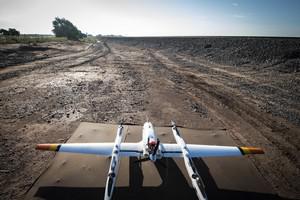DronesSecuring drone traffic
In a couple of years, the number of drones in the U.S. national airspace is projected to grow to more than seven million. So many drones together in the air at once has the potential to create serious safety, efficiency and security issues if not regulated. The Unmanned Aircraft Systems Traffic Management (UTM) infrastructure will manage national airspace drone traffic in the future, and it is being rolled out in phases over time.

Civilian drone taking off from Cannon Air Force Base in New Mexico // Source: cannon.af.mil
In a couple of years, the number of drones in the U.S. national airspace is projected to grow to more than seven million. So many drones together in the air at once has the potential to create serious safety, efficiency and security issues if not regulated. NASA, the Federal Aviation Administration (FAA) and industry have partnered to develop a capability to manage national airspace drone traffic in the future, called the Unmanned Aircraft Systems (UAS) Traffic Management (UTM) infrastructure, rolling out in phases over time.
The UTM is a cloud-based software architecture that promises organized flight of drones registered with the FAA (think of it as air traffic management, but automated and in the cloud). Anyone flying in the UTM system will need an interface to a UAS Service Supplier (USS) to submit flight intent to other users and receive authorizations for specific access. This will allow the drones to communicate with UTM for pre-flight schedules and announce airspace use.
Because heightened drone traffic also produces challenges for law enforcement as they try to identify and interdict illicit activity, the Department of Homeland Security (DHS) Science and Technology Directorate (S&T) is working closely with NASA and the FAA to develop its own independent USS to monitor traffic and enable greater transparency.
Anonymous no more
S&T says that USS interfaces could be developed in-house by a drone user that has the resources to develop their own, or more likely, they would connect through a third-party interface—in this respect, a USS works like an email server where you send your email on the internet through your internet provider.
Communication between UTM and different USS interfaces is meant to support the needs of the FAA, such as the managing flight plans. In addition, counter-drone systems can potentially use flight information and assist in discriminating friend from foe.
